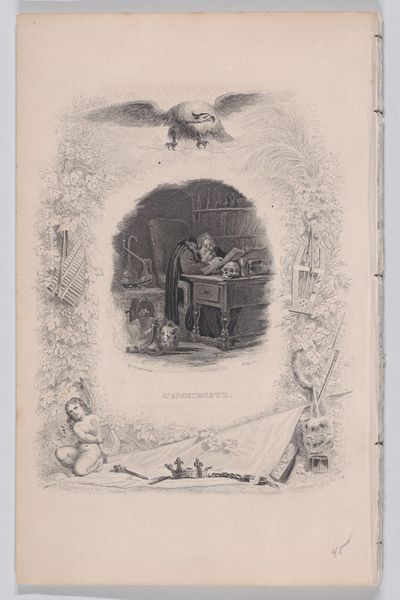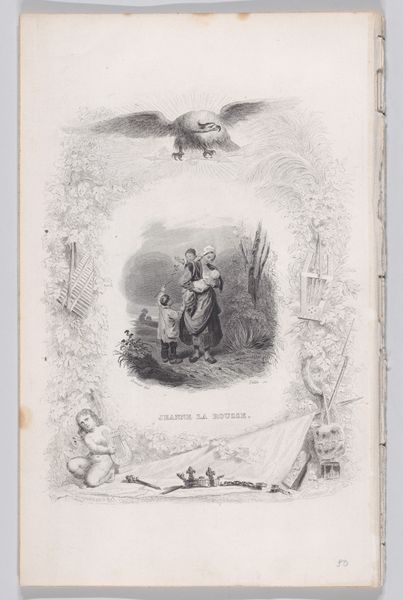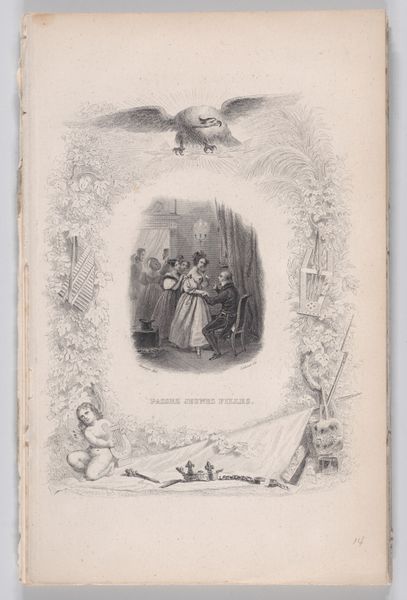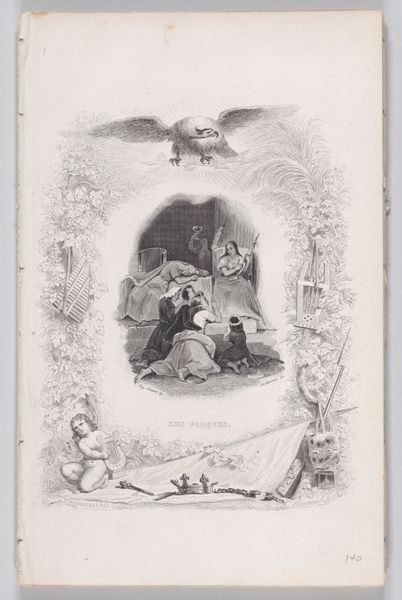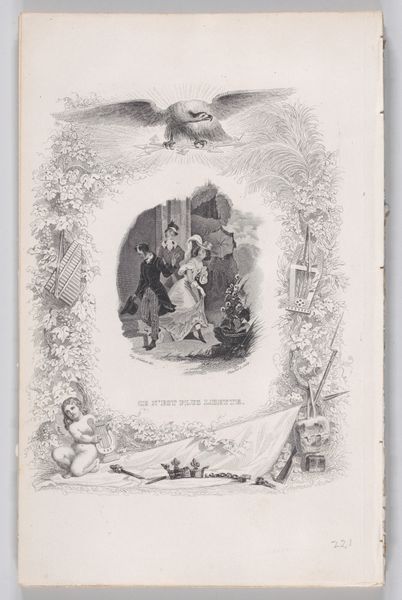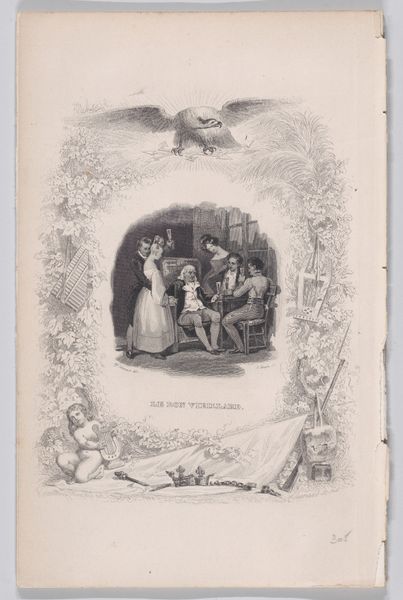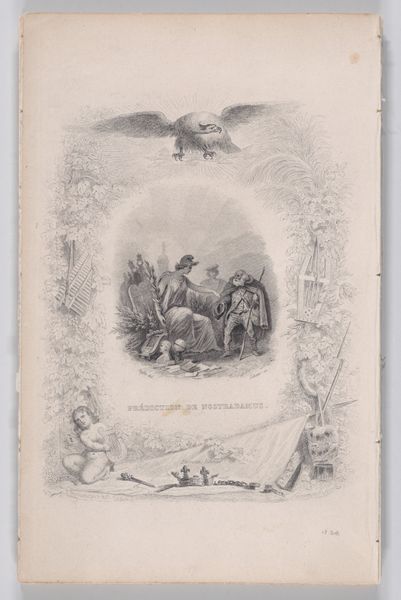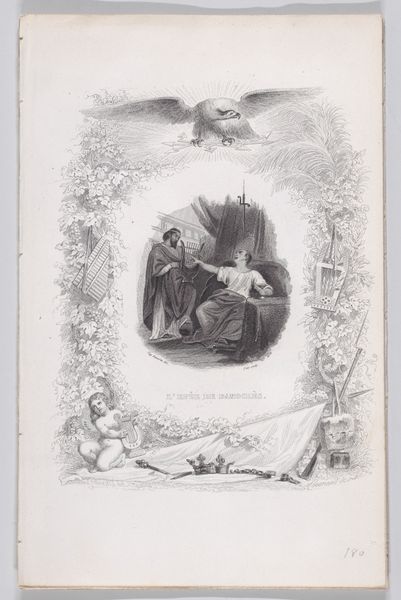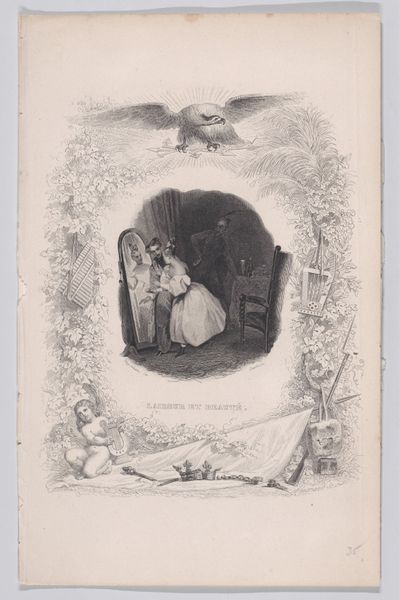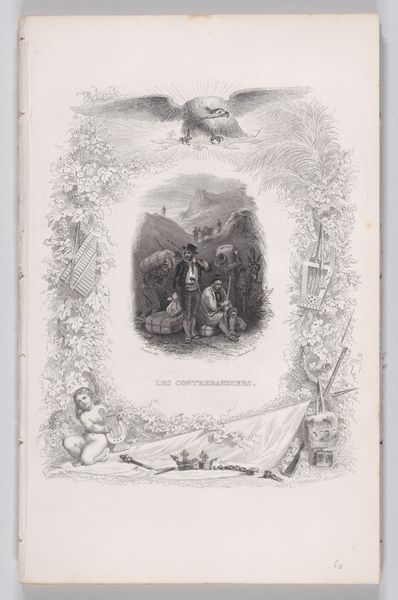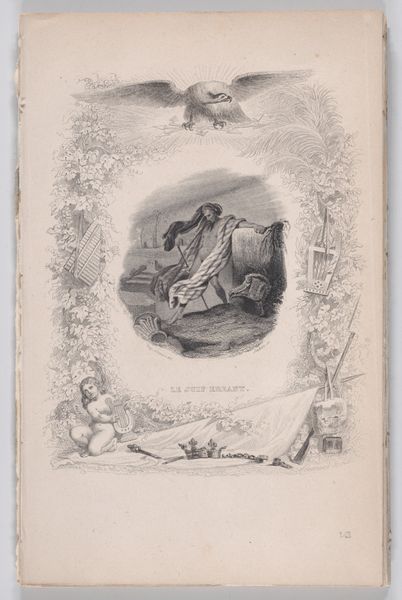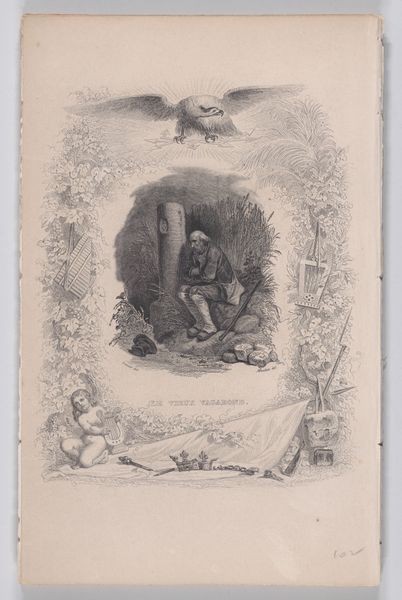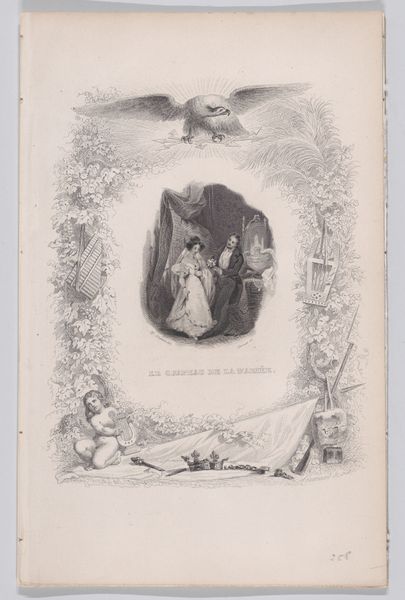
drawing, print, engraving
#
drawing
#
narrative-art
# print
#
romanticism
#
engraving
Dimensions: Sheet: 8 5/8 × 5 1/2 in. (21.9 × 14 cm)
Copyright: Public Domain
Editor: We’re looking at J.J. Grandville’s 1829 engraving, "The Schoolmaster" from The Songs of Béranger. There's this very busy border around the central image, but the interior scene feels quite stern and enclosed. What social commentary do you see embedded in this piece? Curator: Well, consider the era. Grandville was working during a period of significant political upheaval in France. Look at the imagery surrounding the central scene – the broken crown, the discarded weapons, all framed within this seemingly idyllic, almost suffocating, border. It screams of a revolution betrayed, a new regime clinging to power under the guise of order and tradition. Editor: That makes sense. So the schoolmaster and his student… they're part of this new order? Curator: Precisely. The schoolhouse becomes a microcosm of the state, a place where ideology is instilled, dissent is punished—note the punitive rod the master carries. The student peering into the mirror might signify forced self-reflection or indoctrination to internalize these power structures. It speaks to issues of autonomy and forced compliance in post-revolutionary society. Editor: And the eagle at the top? Curator: That would allude to rising imperial ambitions, doesn’t it? Are these symbols of progress, or a more insidious form of control replacing the old monarchy? We must ask ourselves, who truly benefits from this new era of “enlightenment?” What voices are being silenced? How does this artwork challenge us to examine education as a tool for both liberation and oppression? Editor: I hadn't considered the eagle in that light. Seeing the broken crown and discarded arms, alongside these potential allusions to propaganda really contextualizes the sense of suppression I was getting. Curator: Exactly! Art from this period demands that we dig beneath the surface and ask the tough questions about who holds the power, and how they maintain it. Always consider whose story isn’t being told. Editor: That’s given me so much to think about – especially the darker side of supposedly enlightened institutions. Curator: That tension is exactly where the power of Grandville’s work resides, a constant nudge to remain critically aware of the power dynamics shaping our world.
Comments
No comments
Be the first to comment and join the conversation on the ultimate creative platform.
